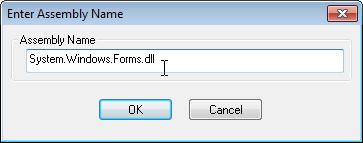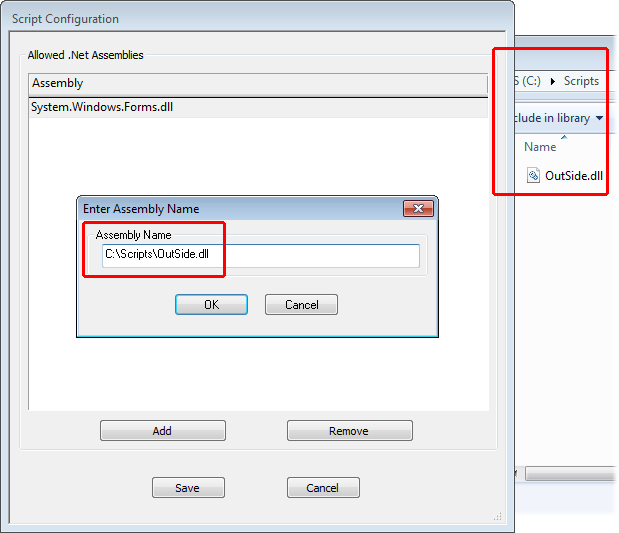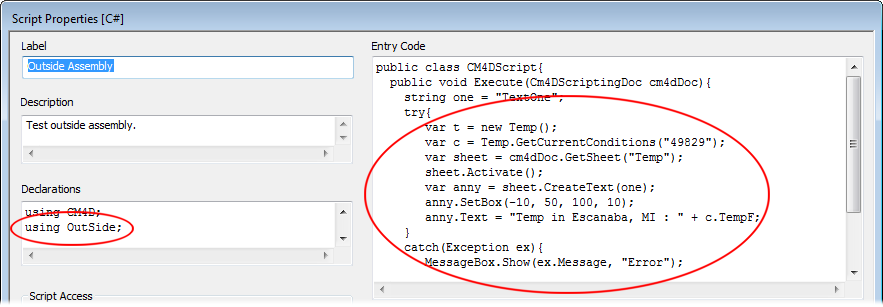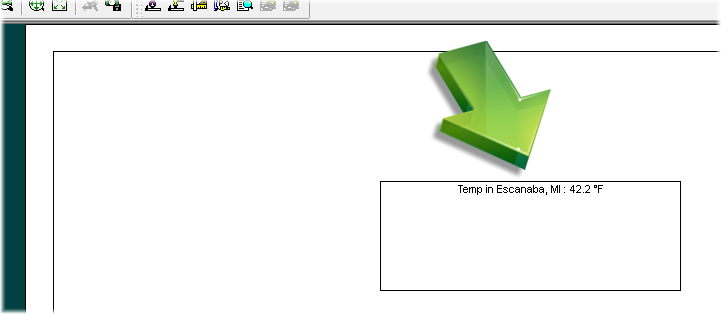External .Net Assemblies can be called by internal scripts, including global or private assemblies. Which assemblies are made available to script-writers is determined by the Script Administrator.
All allowed assemblies must resolve properly each time any script is executed, even if the executed script does not use an assembly.

It is the responsibility of the Script Administrator to ensure that all assemblies properly resolve, or to remove invalid assemblies from the list.
Script Configuration
You can add .Net Assemblies using the Script Configuration dialog. To access this dialog, use the menu Document>ScriptConfig.
If you do not have the Script Administrator user privilege, this menu option will be disabled.

If your assemblies are in the Global Assembly Cache (GAC), then you do not need to include the full path with the assembly name.
Add External Assembly
To add an external assembly that is in the GAC:
Click Add.
Type in the name of the Assembly library.

Click OK.
Click Save.
Add External Custom Assembly
To add an external custom assembly that is not in the GAC:
Click Add.
Type in the full path and file name of the custom Assembly library.

Click OK.
Click Save.

Use the Custom Assembly in a Script
When creating your script, add the declaration and use your custom assembly.

As a result of executing the script in the example above, the report now looks like this:

For more code examples, see the topic Scripting Examples.